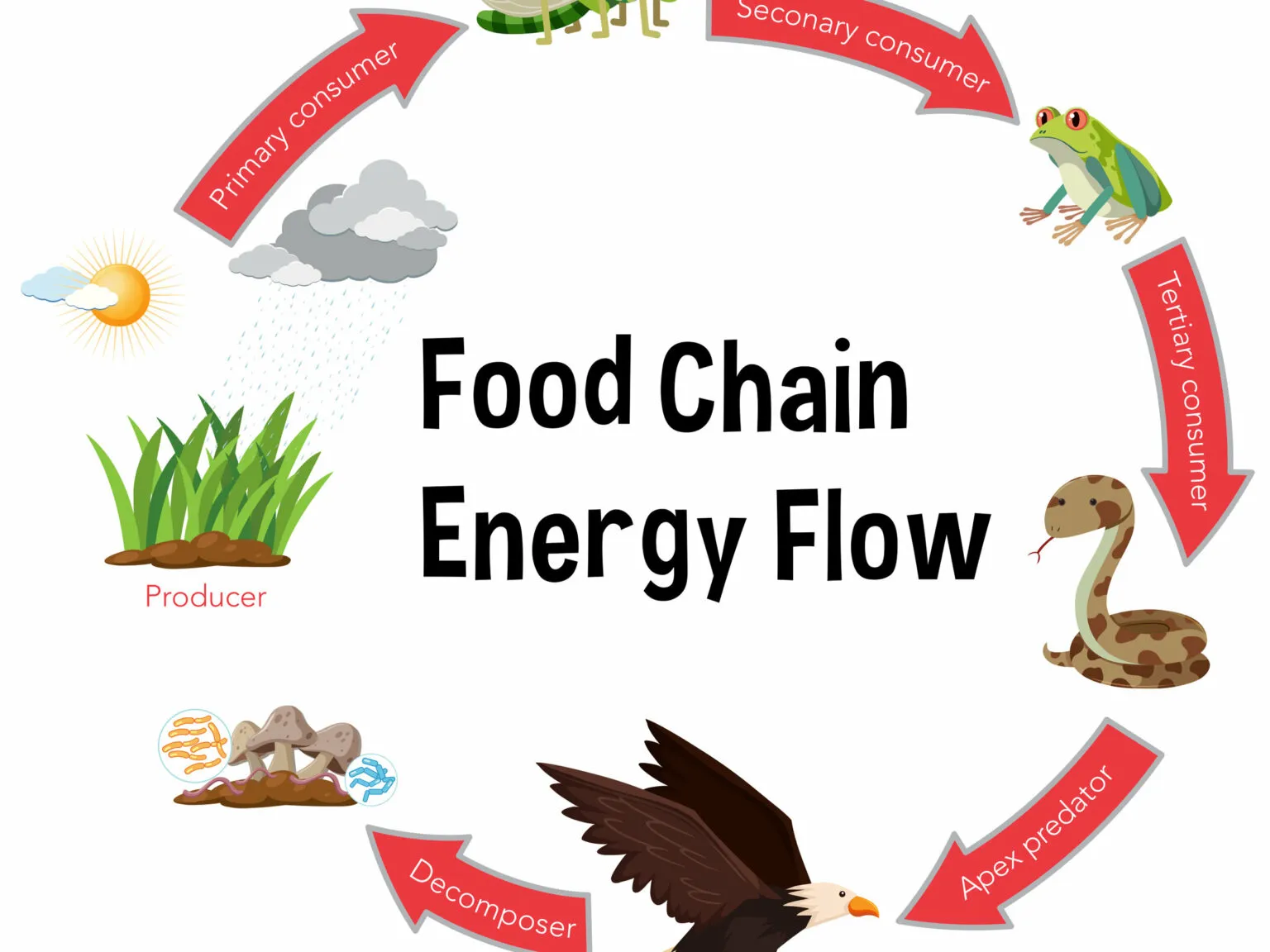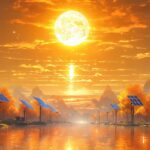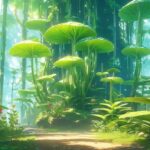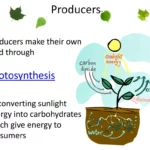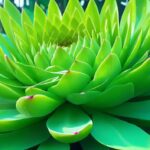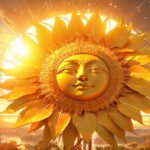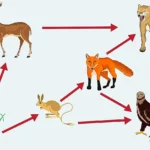Get ready to dive into the amazing world of nature’s dance! It’s a show where plants, animals, and tiny creatures play different roles to keep our ecosystems thriving. Plants, like green powerhouses, capture sunlight to make food. Animals, like cheetahs and whales, use that food for energy to roam and munch. And then there are the cleanup crew—decomposers—who break down leftovers, making way for new life. Together, they create a harmonious symphony that proves how connected everything is in our natural world. Let’s explore this dance of life and understand how each level plays a part in sustaining our planet’s vibrant tapestry.
Producer-Consumer-Decomposer: The Circle of Life
Think of the natural world like a bustling city, full of life and activity. In this city, everyone has a role to play. The “producers” are like the city’s bakeries and farms, creating the food that fuels everyone else. They use sunlight or even chemicals to whip up their own meals, kind of like a chef with a secret recipe.
Now, imagine the “consumers” as the hungry residents. Some are like squirrels nibbling on nuts, representing herbivores who munch on plants. Others are like wolves chasing deer, showcasing the carnivores who eat other animals. And then there are the omnivores, the adventurous eaters who enjoy a bit of everything, like bears who love berries and fish.
But what happens to the leftovers, the fallen leaves, and the things that pass away? That’s where the “decomposers” come in. These are the city’s recyclers, the unseen heroes who break down all the waste and turn it into something useful again. They’re like master composters, transforming scraps into rich soil that helps those producers grow even more food.
This beautiful cycle of producers making, consumers eating, and decomposers recycling is what keeps the city of life thriving. Each player depends on the others, showing how interconnected everything truly is.
Let’s take a closer look:
| Role | What they do | Examples |
|---|---|---|
| Producers | Make their own food from sunlight or chemicals | Plants, algae, some bacteria |
| Consumers | Get energy by eating other organisms | Herbivores (eat plants), carnivores (eat animals), omnivores (eat both) |
| Decomposers | Break down dead organisms and waste into nutrients | Fungi, bacteria, some insects |
Just like a city needs everyone working together, a healthy ecosystem relies on the delicate balance of producers, consumers, and decomposers. It’s a reminder that even in the smallest parts of nature, there’s a fascinating story of life, connection, and the constant flow of energy.
Have you ever wondered which organism is an example of a producer? Producers are important organisms in an ecosystem because they use energy from sunlight to produce food for themselves and other organisms.
Consumers: The Foodies of the Earth
We’ve talked about the amazing producers, the ones who whip up food from scratch using sunlight. Now, let’s chat about the consumers – those who can’t resist a good meal already prepared. Think of them as the “foodies” of the natural world, always on the lookout for their next bite.
What Makes a Consumer?
Simply put, consumers are organisms that can’t make their own food. Instead of cooking up energy from sunlight like plants do, they get their fuel by munching on other living things.
Think about it: a rabbit nibbles on clover, a hawk swoops down on a mouse, and you might enjoy a veggie burger (made from plants!) or a piece of grilled chicken. We’re all consumers, relying on other organisms to satisfy our hunger.
A Colorful Cast of Characters
The world of consumers is incredibly diverse. You’ve got your herbivores, the plant-lovers like deer grazing in meadows or caterpillars munching on leaves. Then there are the carnivores – the hunters like wolves chasing elk or owls snatching mice in the night. And let’s not forget the omnivores, the adventurous eaters who enjoy a bit of both worlds – bears snagging salmon and berries, or humans enjoying a balanced diet.
Keeping Things in Check
Consumers do more than just eat; they play a vital role in keeping ecosystems balanced. Imagine a world where there were only plants. They’d quickly use up all the resources, and things would get out of whack!
That’s where consumers step in. By eating plants, herbivores prevent them from taking over and ensure other plants have access to sunlight and nutrients. And carnivores? They keep herbivore populations in check, ensuring the plant world doesn’t become an all-you-can-eat buffet. It’s all about maintaining a healthy balance.
The Circle of Life
Here’s where things get really cool. Consumers are key players in the continuous flow of energy and nutrients through an ecosystem. When they eat, they break down complex substances into simpler ones, releasing nutrients back into the environment. These nutrients then become available for plants to use, starting the cycle all over again. It’s like a giant, interconnected feast!
Consumers in Action: A Closer Look
| Consumer Type | Example | Diet | Role in Ecosystem |
|---|---|---|---|
| Herbivore | Deer | Grasses, leaves, twigs | Control plant populations, provide food for carnivores |
| Carnivore | Lion | Zebras, gazelles | Regulate prey populations, prevent overgrazing |
| Omnivore | Raccoon | Fruits, nuts, insects, small animals | Contribute to seed dispersal, control populations of both plants and animals |
In a Nutshell
Consumers, with their diverse appetites and ecological roles, are essential threads in the intricate web of life. They remind us that everything is connected, from the tiniest insect to the largest whale. Next time you sit down to a meal, take a moment to appreciate the fascinating world of consumers – the ultimate foodies who keep our planet thriving.
Decomposers
Decomposers, the often-overlooked heroes of the natural world, play a crucial role in the circle of life. Imagine them as nature’s ultimate recyclers. Instead of letting dead stuff pile up, they break it down – old leaves, fallen trees, even animal remains. This process might not sound glamorous, but it releases essential nutrients back into the soil. Think of it like composting on a grand scale!
These nutrients then become food for producers – your plants, algae, and some bacteria. They’re the ones kicking off the whole food chain by using sunlight to make their own food through photosynthesis. Then come the consumers who can’t make their own food and rely on gobbling up producers or other consumers. You’ve got your herbivores munching on plants, carnivores hunting for prey, and omnivores enjoying a bit of both worlds.
This beautiful interconnectedness between producers, consumers, and decomposers is what keeps an ecosystem humming along. It’s a delicate balance, with each group depending on the others for survival.
| Role | What They Do | Examples |
|---|---|---|
| Producers | Make their own food using sunlight (photosynthesis) | Plants, Algae |
| Consumers | Eat producers or other consumers for energy | Animals |
| Decomposers | Break down dead stuff, releasing nutrients back into the environment | Fungi, Bacteria |
Think of it this way:
- Producers are like the chefs – they whip up the first course.
- Consumers are the diners – savoring the meals provided.
- Decomposers are the cleanup crew – ensuring nothing goes to waste and the cycle can start anew.
Why Are Producers Called the Foundation of Ecosystems? What Would Happen If Consumers Disappeared From an Ecosystem?
Think of an ecosystem like a giant apartment building, buzzing with life. Producers, like the plants and algae we see everyday, are the ground floor – the foundation. They’re the ones who take basic ingredients, like sunlight and nutrients, and turn them into the building blocks of life – food! This food is like the energy that powers everything in the building.
Without producers, there’d be no energy source, no food to fuel the rest of the residents. The whole system would crumble. Imagine trying to have a functioning apartment building without a solid ground floor! It just wouldn’t work.
Now, let’s talk about the other residents – the consumers. They’re like the folks living on the upper floors, relying on the ground floor’s energy to get by. Herbivores, who munch on plants, are like the folks on the first few floors, directly benefiting from the producers’ work. Carnivores, who eat other animals, are like residents living higher up – they depend on the folks below them for sustenance.
But what if all the residents above the ground floor suddenly vanished? Well, the building wouldn’t exactly fall apart, but things would get messy. The producers would keep churning out food, but without anyone to eat it, it would pile up. This build-up would throw off the balance.
Think of it like this: without consumers to eat the plants and then decompose, the essential nutrients in the dead plants wouldn’t return to the soil. It’s like never taking out the trash! Eventually, the producers wouldn’t have the nutrients they need to keep making food, and the whole system would suffer.
This is where the often-overlooked residents come in – the decomposers. Think of them as the building’s cleaning crew. These are the bacteria and fungi that break down dead stuff, like fallen leaves or, well, anything that’s no longer living. They’re like the ultimate recyclers, turning that waste back into nutrients that the producers can use again.
Without decomposers, the ecosystem would become choked with waste, like a building overflowing with garbage. The producers wouldn’t get the nutrients they need, and the whole cycle would grind to a halt.
So you see, in this grand ecosystem apartment building, every resident has a role to play. Producers are the foundation, providing the initial energy. Consumers keep things in check by consuming and helping with nutrient flow. And decomposers, while they might not get the most attention, are the unsung heroes keeping the whole system clean and sustainable. Each part is crucial to the success of the whole.
FAQ
Q1: What are the three main functional groups in an ecosystem?
A1: The three main functional groups in an ecosystem are producers, consumers, and decomposers.
Q2: What is the role of producers in an ecosystem?
A2: Producers are organisms that can make their own food, such as plants and algae. They use energy and inorganic molecules to create food through photosynthesis or chemosynthesis.
Q3: What is the role of consumers in an ecosystem?
A3: Consumers are organisms that cannot make their own food and must eat other organisms to obtain energy, such as animals and fungi. They feed by consuming producers or other living organisms.
Q4: What is the role of decomposers in an ecosystem?
A4: Decomposers are organisms that break down dead organisms and recycle the nutrients back into the ecosystem, such as bacteria and fungi. They obtain energy by transforming the matter from dead producers and consumers back into inorganic forms.
Q5: How are producers, consumers, and decomposers interconnected?
A5: Producers, consumers, and decomposers are interconnected in a food web, where energy flows from producers to consumers and then to decomposers. Decomposers break down dead organisms and release inorganic molecules back to the environment for producers to use, completing the cycle.
- Discover Long Black Pepper: Flavor & Health Benefits - April 25, 2025
- Shocking Twists: The Grownup Review: Unreliable Narration - April 25, 2025
- A Quiet Place Book vs Movie: A Deep Dive - April 25, 2025
